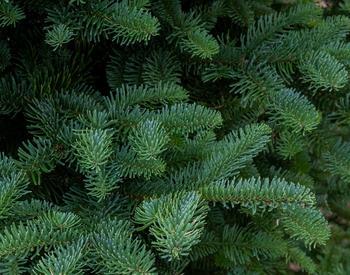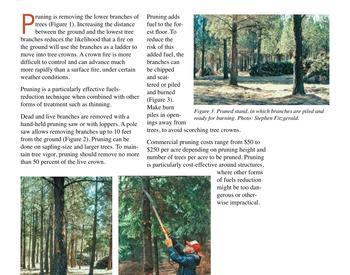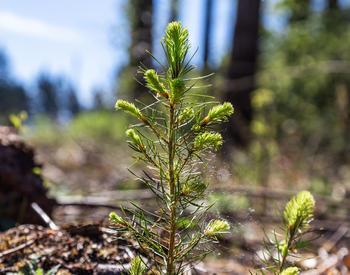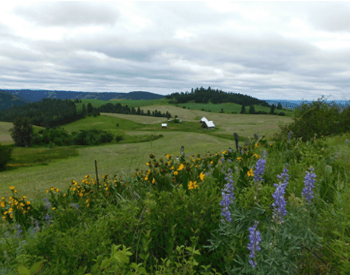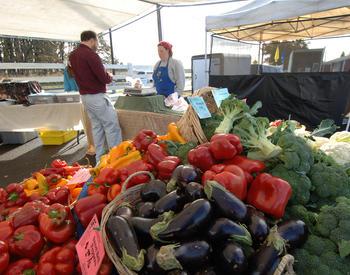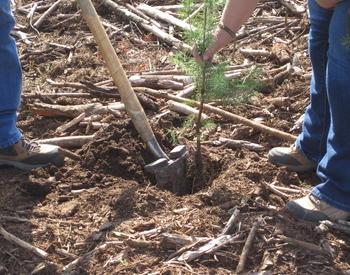One of my favorite ways to get into the holiday spirit is to make a beautiful wreath to hang on my front door from boughs harvested on my own woodland property. This process is similar to how I approach gardening – yes, I could go to the grocery store and buy summer vegetables, but I get so much more satisfaction when I grow them myself. I could buy a wreath from a local store, but it is so much fun harvesting the boughs, cones and berries myself and using my own creative freedom to make a beautiful wreath to adorn my door.
You can harvest boughs from many native evergreen conifers to make wreaths. Popular ones include Douglas-fir, western redcedar, incense-cedar, grand fir and other true firs. While you’re in the woods harvesting boughs, look for cones, berries and evergreen hardwood foliage to incorporate into your wreath to add some flair.
It is best to harvest boughs after they’ve been exposed to a hard frost, which allows the tree to be in a dormant state, thus reducing stress to the tree. This also allows the needles to remain on the cut branch through the holiday season. You can start harvesting boughs as early as October and continue through December.
When cutting boughs, be aware of where you make the cut. In order to encourage regeneration, boughs should be cut 3-4 feet from the tip of a branch (above the node). If you are achieving multiple woodland management goals while cutting boughs, such as pruning or harvesting your trees, then you can cut the entire branch off the tree. Remember to use proper pruning techniques by avoiding leaving stubs, avoiding any flush cuts, and cutting just outside the branch collar to promote a faster healing process.
In general, avoid cutting more than 25% of the live crown of any tree that you harvest boughs from (that will remain standing). This will help prevent stress on the tree. Harvest boughs using a rotation process through your woodland, so you don’t harvest from the same area each year. Aim to reenter an area every three to five years.
Once you’ve harvested your boughs, store them in loose piles in a refrigerator at 37°F or outside under a cool, dense tree canopy with good airflow. Keep boughs moist with periodic misting or sprinkling with water, but be careful not to do this in excess, as it can promote mold growth.
If you find that collecting boughs is your new passion, then you may be interested in marketing some of your product to local buyers. You may find that harvesting boughs goes hand in hand with some other forest management activities, such as pruning, pre-commercial thinning, or commercial thinning. Think about how you can incorporate multiple goals and revenue streams into one operation.
The ideal age for bough trees is 10-30 years old. However, you can obtain quality boughs from older and younger trees. Before you get out there and start cutting, talk with local buyers to see if there is interest in your boughs. You want to make sure you have a market before you put in all the work. Buyers might include retail florists, nurseries, seasonal wreath-makers and intermediary buyers. Talk with the buyer to understand exactly what they want – including species, size, cut, color and other preferences. Contact them well before the holiday season begins, such as late summer or early fall. Prices will vary depending on who you sell to, so do your homework before you start harvesting boughs on your woodland.
So join me this fall by walking your woodland and making a wreath — or two or more to share! They are a cheery way help ring in the holiday season.
For more information, see Evergreen Boughs: A Brief Introduction to Harvesting and Marketing from Small Private Forestlands in the Pacific Northwest.

